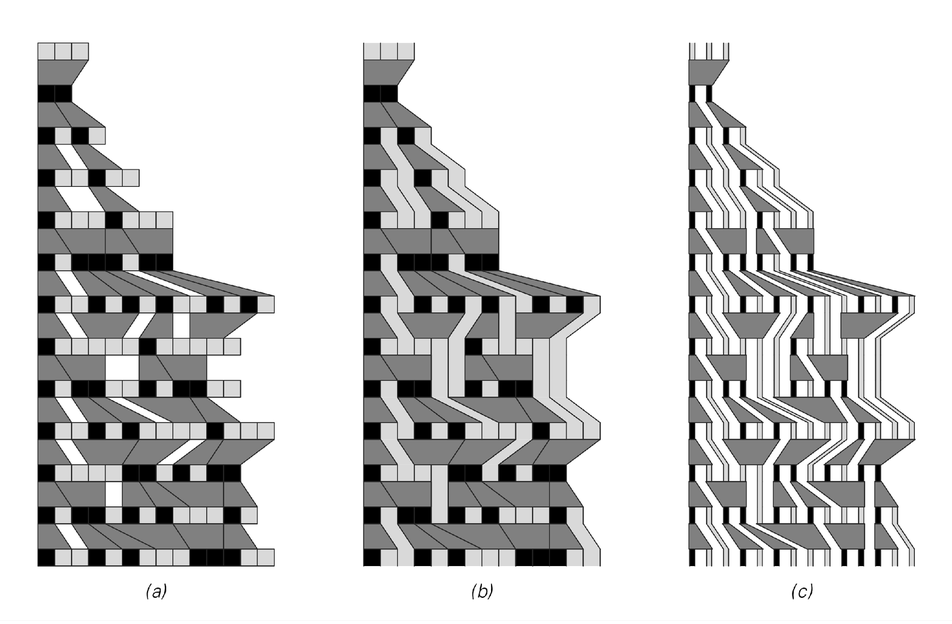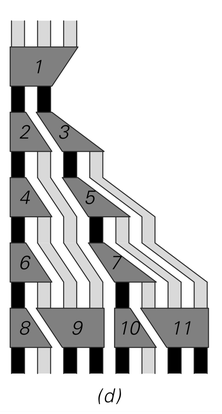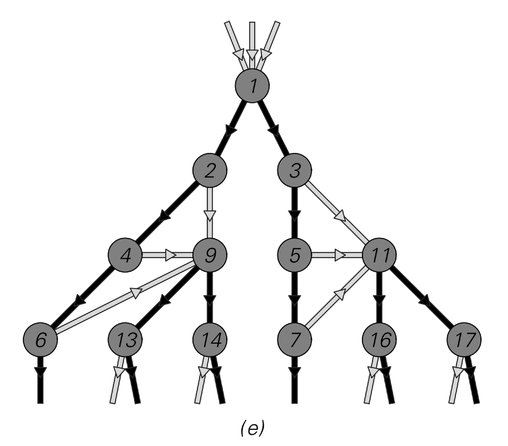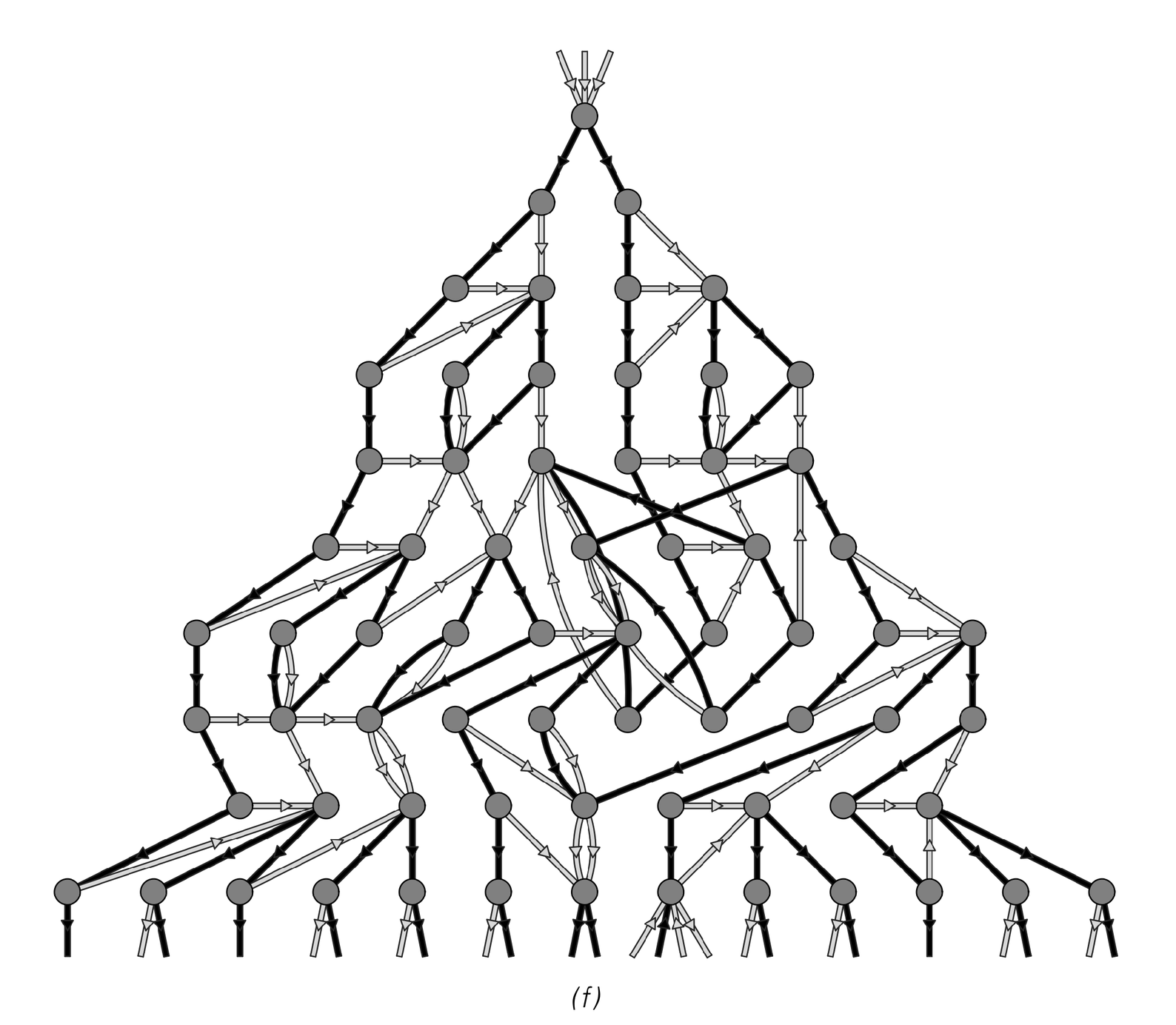The Sequencing of Events in the Universe
In the last section I discussed one type of model in which familiar notions of time can emerge without any kind of built-in global clock. The particular models I used were based on mobile automata—in which the presence of a single active cell forces only one event ever to occur in the universe at once. But as we will see in this section, there is actually no need for the setup to be so rigid, or indeed for there to be any kind of construct like an active cell.
One can think of mobile automata as being special cases of substitution systems of the type I introduced in Chapter 3. Such systems in general take a string of elements and at each step replace blocks of these elements with other elements according to some definite rule.
The picture below shows an example of one such system, and illustrates how—just like in a mobile automaton—relations between updating events can be represented by a causal network.
 |
 |  |  |
Steps in the construction of a causal network from a general substitution system. The substitution system works by replacing blocks of elements at each step according to the rule shown. Each such updating event becomes a node in the causal network. In the case shown here, all the replacements found to fit in a left-to-right scan are carried out at each step.



